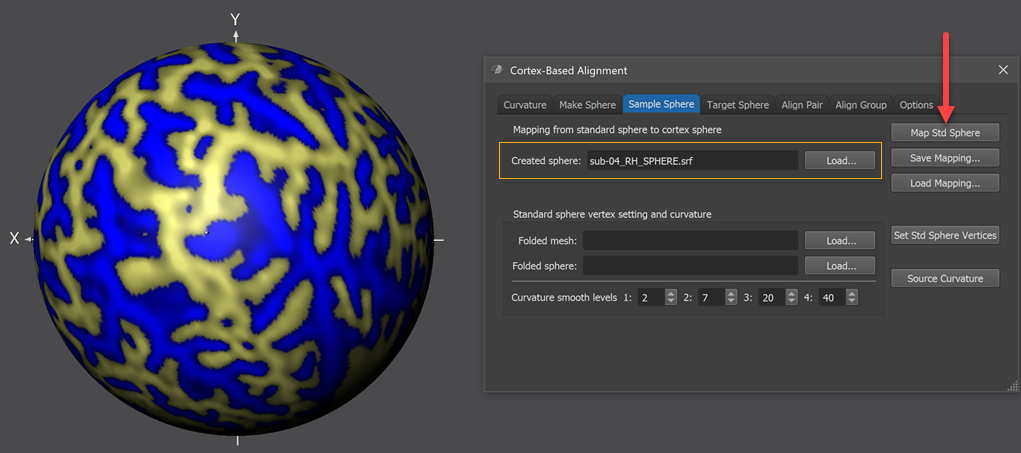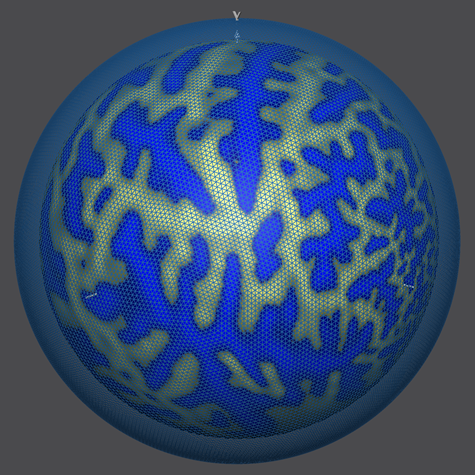BrainVoyager v23.0
Mapping the Standard Sphere to a Morphed Sphere
After having created a spherical representation of a cortex mesh, the hemispheres from different subjects could be aligned at this stage. It is, however, difficult to use these meshes directly for alignment because the number of vertices is different for each subjectl furthermore the density of vertices is inhomogeneous across the sphere surface (different distances between neighboring vertices). To simplify and standardize the alignment procedure, the created spherical meshes are thus first sampled on a standard sphere with 40962 vertices, which is the same for each subject. This sampling is performed by mapping each vertex of the standard sphere to the closest vertex of the subject-specific morphed sphere. The resulting mapping table is stored in a sphere-to-sphere mapping (SSM) file. Note that the alignment can also be performed with a higher or lower sphere mesh resolution (see section "Resolution of Aligned Space" in overview topic Cortex-Based Alignment of Gyri and Sulci).
The mapping from the standard sphere to the inflated (morphed) sphere is performed in the Sample Sphere tab of the Cortex-Based Alignment dialog. The Created sphere text field in the Mapping from standard sphere to cortex sphere field must contain the file name of the saved spherical representation (e.g. "sub-04_RH_SPHERE.srf" in the screenshot below), which is automatically the case when continuing from the previous step, otherwise the respective mesh must be loaded using the Load button on the right side of the Created sphere text field.

To initiate the mapping, click the Map Std Sphere button (see screenshot above). A second sphere appears, which is the standard sphere that will be used for all subjects. It will be saved to disk under the name "untitled_SPH.srf" (the "SPH" name is used to indicate that this mesh is a standard sphere mesh). The standard sphere mesh appears in wireframe mode allowing to also see the subject-specific inflated sphere mesh inside the created standard sphere (see screenshot below). Note the regularity of the vertex-vertex-spacing of the wrieframe of the standard sphere.

The program automatically asks to save the established mapping between the standard sphere and the original sphere to disk suggesting the same name as used for the inflated sphere mesh, but with the appropriate SSM extension (e.g. "sub-04_TAL_RH_SPHERE.ssm"). In the next step, the SSM file is used to transfer information from the inflated cortex mesh to the standard sphere.
Copyright © 2023 Rainer Goebel. All rights reserved.